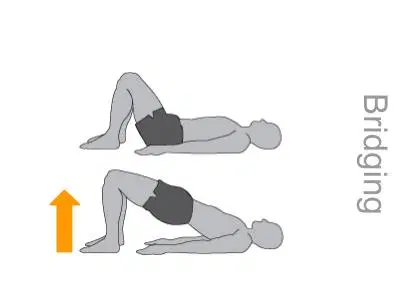ACL INJURY & PREVENTION By: Vanessa Niemeyer, PT, DPT
What is an “ACL”?
ACL stands for anterior cruciate ligament. This is 1 of 4 major ligaments that provide stability to your knee. The ligament is connected from your thigh bone (femur) to your shin bone (tibia) and is responsible for preventing forward translation of your shin bone on your thigh bone.
What happens if my ACL is torn?
Your ACL provides stability to your knee joint. Without your ACL, most people experience pain, discomfort and significant instability during physical activity. An ACL tear can lead to an earlier onset of osteoarthritis in your knee joint, also increasing your pain later on in life. Your ACL also impacts your stability with rotation and pivoting; without it you may experience a sensation that feels as though your knee is “shifting” with movement.
Oftentimes, when an ACL injury occurs, the individual hears an audible “pop,” or “snap.” Typically your involved knee will swell significantly within a few hours. Your knee will most likely feel unstable when you go to put your weight on your leg. Some will experience a sensation that feels as though their knee is going to give out on them when they put weight on their leg.
Do people actually tear their ACLs?
The APTA reports that roughly 200,000 people in the US are diagnosed with an ACL injury each year. Of those 200,000 ACL injuries, roughly 95,000 are ACL ruptures. Women are more likely than men to tear their ACL, however, men still do tear their ACLs. Common mechanisms of injury include: landing on a straight leg from a jump, pivoting, twisting, forceful impact to the knee, shifting weight from one leg to the other too quickly, and falls/ slips.
How Can I Prevent an ACL injury?
Most research suggests a dynamic warm up before activity, and stretching following activity to prevent injury in general. Dynamic warm ups include activities such as leg swings, jogging with high knees in place, and butt kicks while moving forward.
Research also supports strengthening the muscles around the knee, including: the quadriceps, hamstring, gastrocnemius (calf), and 4 major hip muscle groups. The greater the strength of the muscles surrounding the knee joint, the more stable the knee joint remains.
Strengthening should always be done with proper form. Exercise machines are a great tool to get you started, as these make it easier to keep proper form, however, you’ll eventually want to progress to more dynamic tasks, such as squatting and lunging.
Exercises Specific for ACL Injury Preventions:
Supine Straight Leg Raise with External Rotation: Lay on your back. Straighten one leg, bend the other and place your foot on the surface in which you are lying. Rotate your straight leg so your toes rotate outward. Slowly raise your straight leg up and then slowly lower it back down.
2. Lateral Step Up/ Step Down: Find a step (between 3 - 8 inches high). Place your left leg on the step and keep your right foot on the ground, you want to be turned towards the side of the step. Slowly straighten your left leg and allow your body to rise up. Slowly bend your left knee & lower yourself back down to your starting position.
*It is essential to keep your left leg from buckling in as your raise up & lower down*
(Perform with your right foot on the step if your right leg is desired to be strengthened)
3. Squatting: Be sure that your toes are pointed forward, your feet should be spread about hip width apart, keep a straight back, make sure your knees do not go past your toes, and make sure your hips go backwards (as if you were going back to sit on a chair right behind you).
Slowly bend your knees to lower down, and then slowly lower up (goal = knees to 90 degrees) - No knee pain should occur, if it does, stop
*Again, it is essential to keep your knees from buckling in as you raise up and lower down
4. Single Leg Balance: Stand on your left leg, keeping your knee straight (and again, avoiding any buckling in while you perform this activity), remove your right leg from the ground (by bending your knee). Try to balance on just your left leg (goal is up to 2 minutes without handrail or steadying assistance).
***Safety first, hang on if needed**** Stand next to a stable surface, such as your kitchen counter
5. Bridging: Lay on your back, bend both of your knees, place feet flat on the surface in which you are lying. Slowly lift your hips up towards the ceiling (goal = a straight line made by your thighs and your abdomen), hold for 3 - 5 seconds, slowly lower your hips back down.
**it is important to remember that your feet and knees should remain about hip width apart, your knees should not buckle in/ cave in towards one another as you raise up/down.
*As you become stronger, you can perform bridges with only one leg on the ground - this is something you would then want to perform to the other leg as well
6. Lunges: Start by standing straight up. Bring one leg forward, slowly bend your knees to 90 degrees, slowly bring yourself back up and back to the starting position. Make sure that your knee does not pass your toes. Adjust your foot positioning if necessary.
*Again, be sure to keep your knees from buckling inward while lowering and raising yourself. Perform then with the opposite leg coming forward
After these 6 exercises become easy, and you are sure that neither of your knees are buckling inward, you can then work your way up to more dynamic exercises, such as plyometrics, including: tuck jumps, jumping forward up on to a stable box and jumping forward off of the stable box (at varying heights), skipping, alternating lunge jumps and squat jumps.
Again, you must be sure that your knees are not buckling inward as you perform these activities.
It is important to remember that these are generic exercises and might not be best for you. Please consult a medical provider, such as your physical therapist, to ensure your form is safe and that these exercises are appropriate for you.
Youtube Video on ACL Injury & Prevention:






